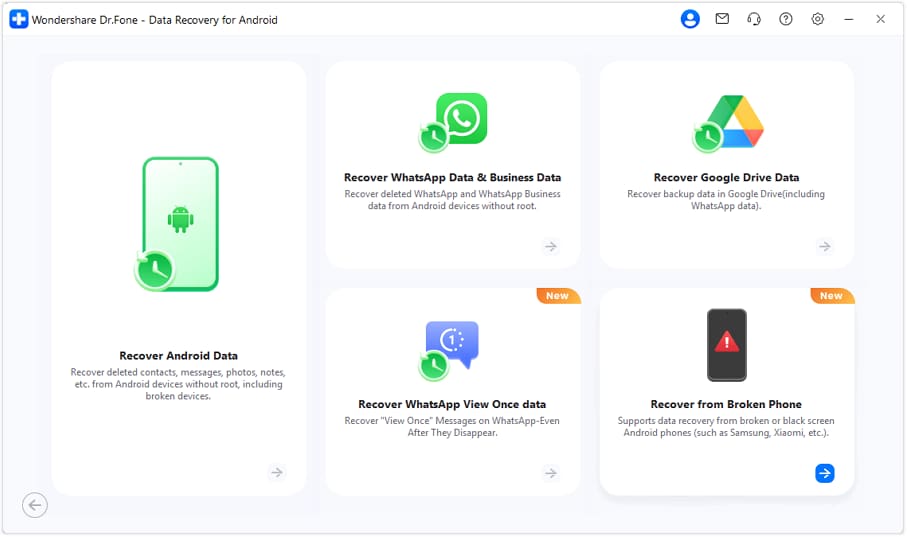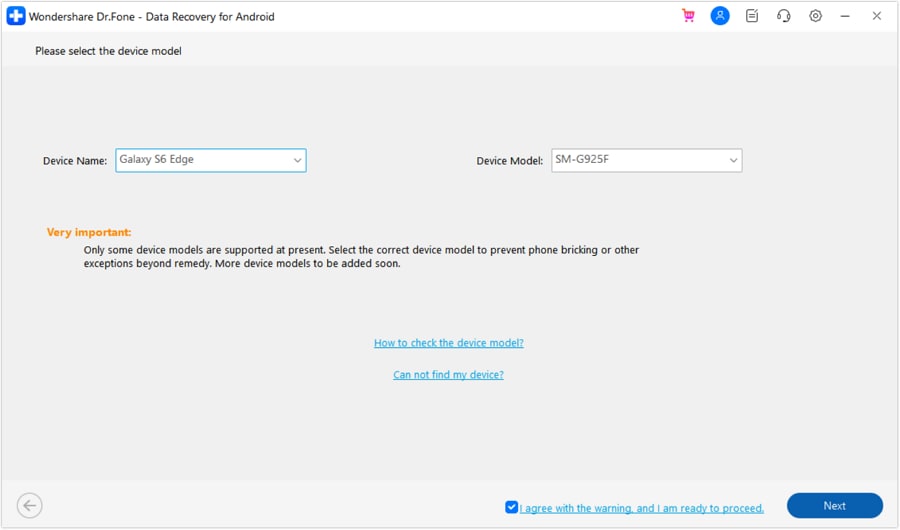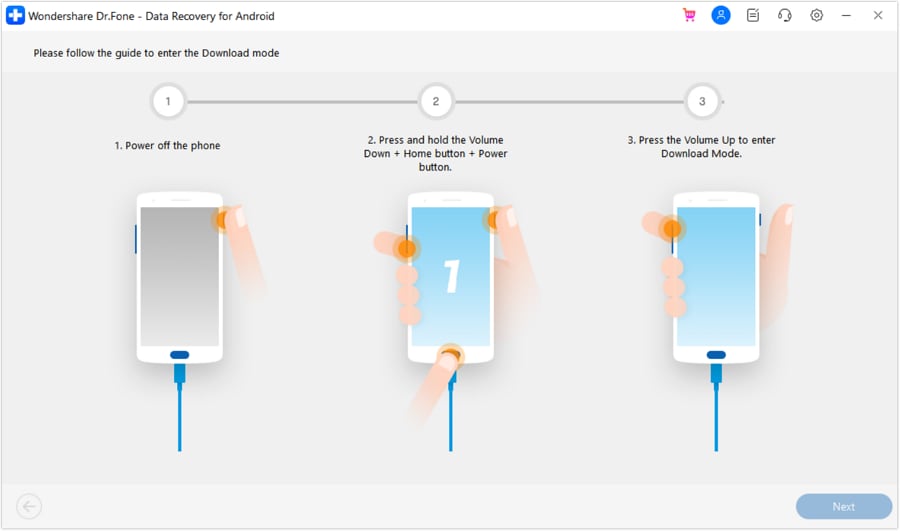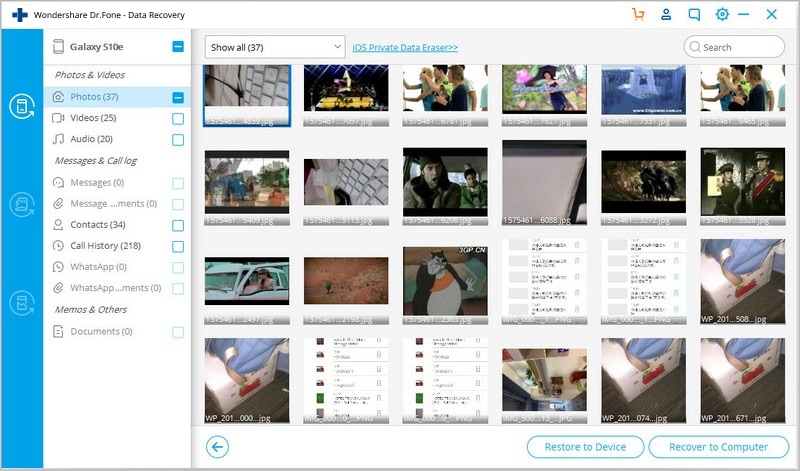It's happened to the best of us – you lean across the table at a restaurant and spill your drink all over your phone. You grab your phone to take a few quick shots for social media by the poolside, and you drop your phone into the water. You scurry to the bathroom, and your phone drops right out of your pocket and into the toilet.
If you're familiar with any of these scenarios, you're likely wondering what your immediate next steps should be. In this guide, let's see what you can do to recover data from a water-damaged phone without risking further data loss.
In this article
Precautions Before Recovering Data From a Water-Damaged Phone
The first question on everyone's mind when they spill something on their phone is – can you recover data from a water-damaged phone? The answer depends heavily on what steps you take as soon as your phone hits the water.
While it's an instinct for most to quickly wipe their phone and immediately check if it's working as soon as it touches some water, that's usually the worst thing you could do. If you want to be able to retrieve data from a water-damaged phone, or at least increase your chances of it, there are some precautions you'll need to take.
Turn Off Your Phone Right Away

Despite your anxiety telling you that you need to immediately check your phone after water exposure, you'll need to resist the urge. Powering it on and double-checking whether everything works can only lead to further damage as you'll increase the risks of a short circuit.
So, to ensure that you can retrieve data from a water-damaged phone, the first thing you'll want to do is turn it off. Unplug your charger, disconnect the earphones, and leave your phone off.
Remove the SD card, SIM card, and Battery
If you happen to have a removable battery (which is, admittedly, a rare sight nowadays), remove it from your device. Take out your SIM, SD card, and microSD card, if you have them.
Moisture can hide in the tightest of spaces and wreak havoc, so removing everything that can be removed will be most useful and help you minimize the damage.
Use a Water Absorption Product

Primarily, go over your phone and its individual components (battery, SIM card, etc.) with a lint-free, highly absorbent cloth. Try to soak up as much water as possible. Then, leave it in some water-absorbent material like silica packets to draw out excess moisture. You'll want to leave it at least overnight, if not for a couple of days.
Although leaving your phone in things like rice could technically work, it's best avoided. While rice does draw out moisture, it also becomes soggy and gummy, which could potentially clog up your phone and cause further damage.
Let Your Phone Dry
If possible, you'll want to avoid powering it back on for about 24 to 48 hours. Leave it to dry and give any last droplet of water that's penetrated your device enough time to evaporate. Don't try to use things like hair dryers, microwaves, ovens, and others to try and speed up the process – it will only make things worse.
How to Recover Data From a Water-Damaged Phone
The precautions mentioned above are just so you can minimize the potential damage and make any data from your phone easier to retrieve. However, if the damage is done and you've lost important data, there are still ways you could get it back.
Take a look below to learn how to retrieve photos from a water-damaged Samsung phone in a few steps.
Retrieve Data From Water-Damaged Phone With Professional Data Recovery Software
Your best course of action after losing data due to water damage is to try to retrieve it with the help of professional data recovery software. Keep in mind that different types of solutions exist, some of which will overwrite your device while scanning for data to recover, potentially risking further data loss.
Instead, look for tools like Wondershare Recoverit or Dr.Fone. Both boast high success rates and keep your data secure - even in instances where it's not entirely recoverable.
Wondershare Recoverit is the ideal solution if you have a phone with an SD card. It's a powerful tool compatible with all kinds of storage devices and works in hundreds of different data loss scenarios, including water damage.
What's more, it can retrieve your data regardless of the file format it's in. Supporting over a thousand formats, from DOC and DOCX to HTML, JPG, MP4, PPT, and RAW, it can recover images, videos, audio files, emails, documents, and more.
Here's how to get pictures (or other data) off a water-damaged phone using Wondershare Recoverit:
- Connect your SD card to your computer, then download and launch Recoverit;
- Under Select a location to start recovery, choose your SD card;

- An all-around scan will automatically start. Wait for it to finish;
- Pause or stop the scan without progress loss at any time;

- Preview the salvageable data and click Recover to save it to your computer.

If your phone doesn't have an SD card, you can instead use Wondershare Dr.Fone. A comprehensive phone management software suite, it offers a convenient data recovery solution even for unresponsive phones.
Here's how to recover photos from a water-damaged phone with Dr.Fone:
- Use a USB cable to connect your phone to your PC, then download and launch Dr.Fone;
- Go to Toolbox > Data Recovery;

- Select your phone (Android or iOS);
- Select Recover from Broken Phone if your phone is unresponsive;

- Select the specific problem with your phone;
- Input your device details and click Next to proceed;

- Type in the required word from the popup and click Confirm;
- Follow the on-screen instructions to put your device in download mode, then click Next;

- Dr.Fone will start retrieving your data;
- Preview your files and select Recover to Computer to save them on your PC.

Due to their high success rates, both Recoverit and Dr.Fone can be excellent solutions to recover data from a water-damaged Android. However, you could also try a couple of other options instead.
Recover Data from a Water-Damaged Phone Using Google Contacts
If you've lost contact data after water damage, the chances are that you'd be able to retrieve it with the help of your Google account. Provided that you've enabled the Back up to Google Drive option when you first set up your phone, you should be able to retrieve all the data from this backup as soon as you add your Google account to your new phone.
Here's how to recover contact data from a water-damaged Samsung phone using your Google account:
- Sign in to your Google account on your new phone/repaired damaged phone;
- Go to Settings > Google;

- Navigate to All Services and select Set up & restore;
- Select Restore contacts;

- Choose the device to restore to, then tap Restore.
Depending on the amount of contact data you have backed up, it could take a few moments for it all to be restored to your device.
Recover Data From Wet Phone via Cloud Backup
Google doesn't solely back up your contacts. If you'd enabled the Back up to Google Drive option, the chances are that all your data (such as photos and videos) have automatically been backed up to the cloud. To retrieve the data, all you have to do is follow these steps:
- Sign in to your Google account on your new phone;
- Go to Settings > Accounts and backup;

- Select Restore from backup.
Unfortunately, though, this option is only available if you've previously backed up your data to the cloud. If you haven't, there's one more option you could try.
Recover Water-Damaged Android via Professional Data Recovery Services
Depending on the extent of water damage, the only option you may have to recover data from a water-damaged Samsung phone is to send it in for professional data recovery. While it's certainly expensive, data recovery companies have access to advanced tools to retrieve data even from the most heavily damaged devices.
Some of the reliable data recovery services you should check out include:
It's in your best interest to look up local data recovery services, as you'll need to physically send your device to them. Most commonly, you'll first have to get in touch with the company to agree on the best time to send your device. Then, you'll need to carefully pack and ship your device (or bring it to their office).
It might take a few days to a few weeks for the company to retrieve your data and give you back your device.
Conclusion
While it can be difficult, recovering photos and other data from a water-damaged phone is usually possible. Whether you use solutions like Wondershare Recoverit and Dr.Fone, your Google account, or professional data recovery services, in all likelihood, you'll be able to get your data back in no time. However, depending on the damage, you might need to set some money aside for a new phone.
FAQ
How do you know if your phone has permanent water damage?
There are many signs that your phone might have suffered permanent water damage. In some instances, your phone might not even turn on. In others, you might notice different symptoms. Your screen might become blurry, you might notice signs of corrosion around your phone, there could be camera and audio issues, some apps might stop responding, and more.Can a phone be OK after water damage?
That depends entirely on the phone and the extent of damage. Most newer phones have a certain level of water resistance, meaning they can be unharmed if you spill water over them or drop them in a puddle. It should be fine if you quickly remove your phone from the water and dry it out completely.
However, if the phone has spent a longer time in the water or if it was completely submerged under a couple of feet of water, it might be unsalvageable.Can you air-dry a wet phone?
When your phone is exposed to water, air-drying is usually the best option. First, wipe the phone down completely, then leave it to air dry for about 24 to 48 hours.Can I use a blow dryer to dry my phone charging port?
No, don't use a blow dryer to dry your phone. The air pressure could push the water further into your phone, exposing it to higher risks of damage. You should also never put your phone in a microwave or oven to dry.
Ideally, place the phone in a bowl with some silica packets to draw out moisture, then leave it to air dry.



 ChatGPT
ChatGPT
 Perplexity
Perplexity
 Google AI Mode
Google AI Mode
 Grok
Grok























